Fauna
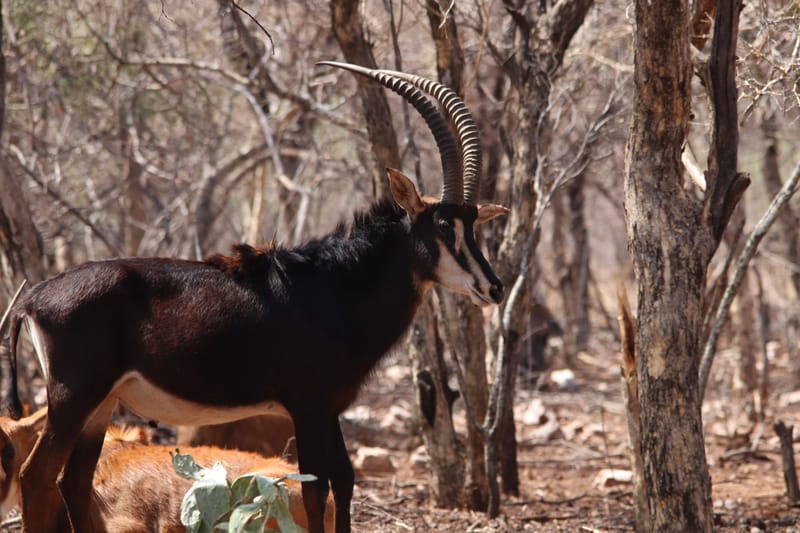
Sable Antelope
The Sable Antelope is a magnificent sight to behold. Did you know that they are known for their aggressive behaviour towards predators? These large antelopes are characterised by glossy black coats with white underparts and white facial markings. Both males and females have stiff black manes along the dorsal aspects of their necks. Bulls can weigh up to 270kg, while cows and young are dark brown in colour. The shoulder height of bulls is 1.4m. Keep an eye out for them grazing in grasslands and open woodlands
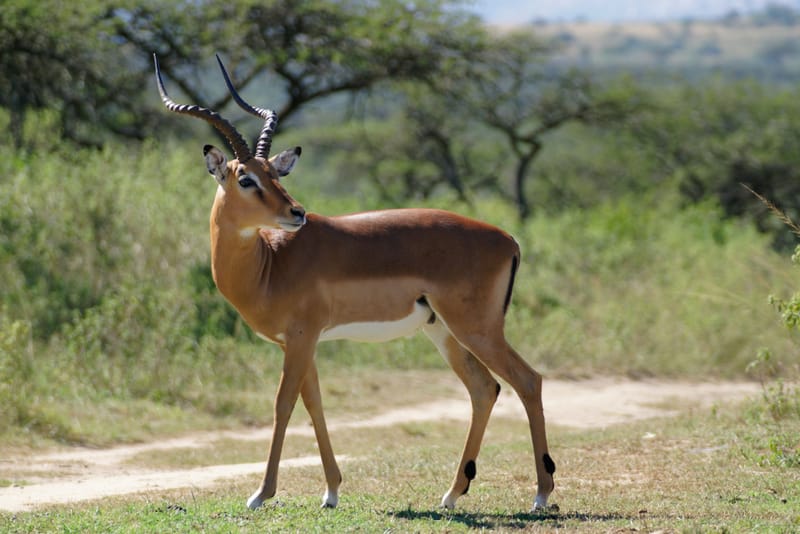
Impala
The Impala is the most common antelope in the bushveld regions of South Africa. They may be common, but don’t underestimate their graceful movements and stunning appearance! These gorgeous antelopes have rufous-fawn coats with white underparts and stand approximately 900mm at the shoulders. Rams weigh around 60kg and ewes weigh around 40kg. They’re known for their incredible leaping ability, which helps them soar through the bush! Keep an eye out for these impressive jumpers as they leap through the bushveld.

Kudu
Kudu’s are majestic creatures with long spiral horns that can reach up to 1.8m in length! The bulls use their impressive horns to establish dominance and attract mates. Bulls grow much larger than cows and can weigh up to 300kg with a shoulder height of 1.4m. Their tawny brown to grey-brown coats are marked with white stripes on flanks, which vary greatly in shape, size, and pattern. Both sexes have a V-shaped band on the forehead and white spots on cheeks. Did you know that they can jump up to 3 meters in one go! Look out for these beautiful creatures in the wooded areas and plains.

Nyala
The Nyala is a very handsome antelope species with a slate brown, shaggy coat marked with white vertical stripes and spots on the flanks. Bulls appear more charcoal grey in colour and have long, inward-curving horns (650mm) and a white, chevroned face. Bulls weigh 115kg and measure 1.05m at the shoulders, while cows are much smaller and do not have horns. They weigh 59kg and stand 900mm at the shoulders. Did you know that they are known for their shy and secretive nature and are often seen hiding in thickets and bushes. Keep an eye out for them grazing in the dense bush.
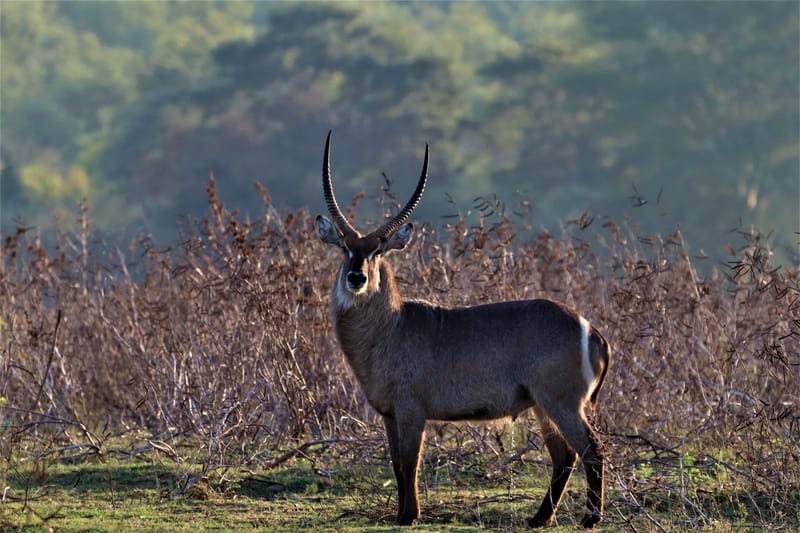
Waterbuck
Waterbucks are large, robust antelopes with a special brownish-grey, shaggy coat. Bulls have a shoulder height of 1.4 meters and can weigh up to 260 kg, while cows are smaller than the bulls. They’re known for their distinctive musky smell, which lingers at their resting sites. Did you know that they use this smell to ward off unwanted visitors? They tend to hand out near water sources, hence their name. So, keep an eye out for these smelly fellows as they graze near the river.
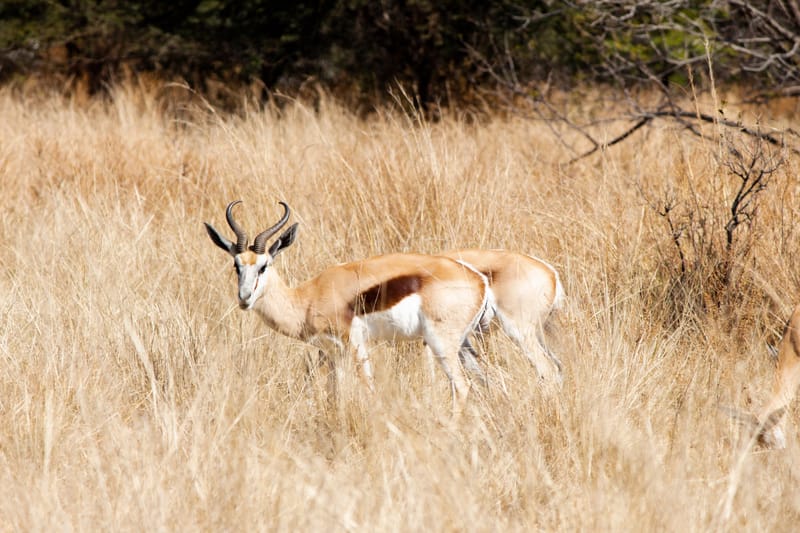
Springbok
Springboks are known for their striking body colour and their impressive speed! Did you know that they can reach speeds of up to 90km/h! They also have a unique way of escaping predators, called pronking. This is where they jump high into the air with all four feet together, appearing to ‘pronk’ and disappear into the expanse wilderness. These antelopes have cinnamon-coloured upper bodies which make them easily recognisable. They’ve got white underparts, and a broad dark brown stripe on either flank, stretching from their front legs to their rear legs. Rams can weigh up to 50kg, while ewes only reach up to 37kg. Their shoulders appear lower than their hindquarters. The Springbok is also the national animal of South Africa and our national rugby team is known as the Springbok! Look out for these amazing jumpers as they race across the open grasslands.
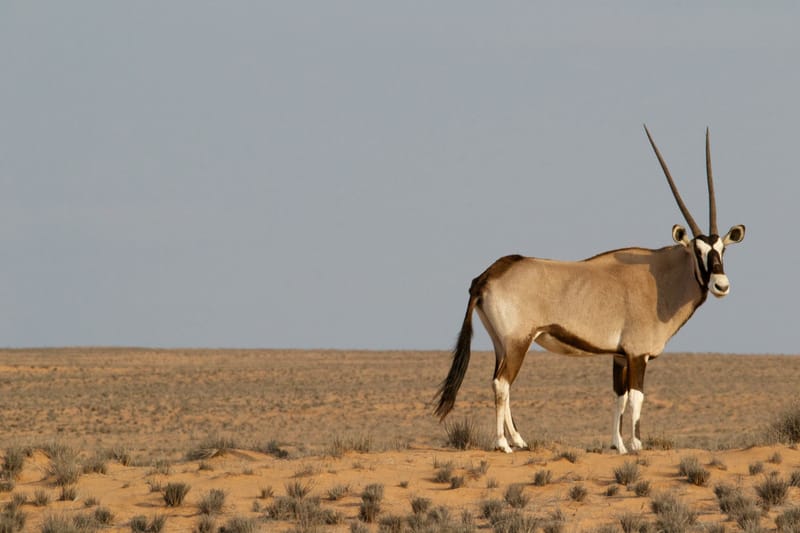
Gemsbok
Gemsbok are light taupe to tan in color, with lighter patches toward the bottom rear of the rump. Their tails are long and black in color. A blackish stripe extends from the chin down the lower edge of the neck, through the juncture of the shoulder and leg along the lower flank of each side to the blackish section of the rear leg. They have muscular necks and shoulders, and their legs have white 'socks' with a black patch on the front of both the front legs, and both sexes have long, straight horns.
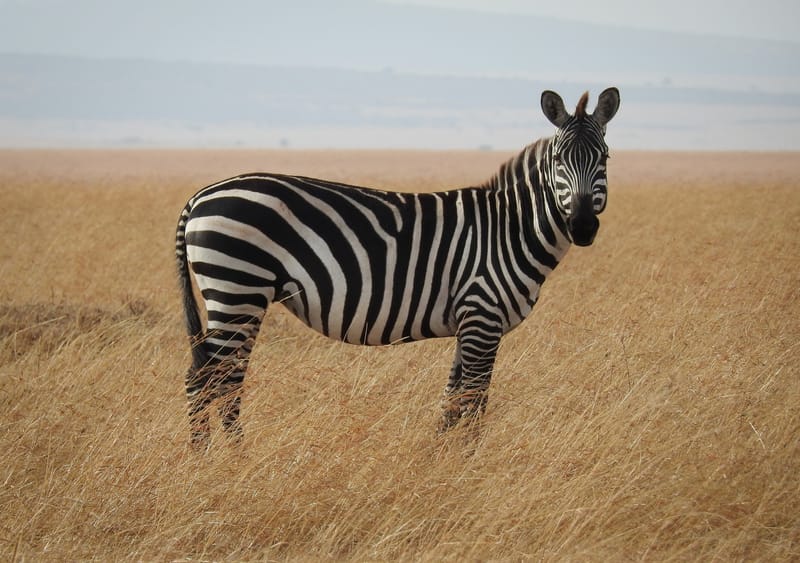
Burchell Zebra
The Burchell Zebra is the most common zebra species across the African continent. Each zebra has unique stripes that can be used as an identification character to distinguish between individuals. They tend to move in large herds. The males are slightly larger than females, and they have a narrow black stripe running vertically between their hind legs. In females, this stripe is wider. Males grow to between 1.35 and 1.37 m at the shoulder and weigh between 290kg and 340kg, while the females weigh about 260kg. Keep an eye out for these beautiful creatures as they trot through the grasslands.

Eland
Mainly a herbivore, its diet is primarily grasses and leaves. Common elands form herds of up to 500 animals, but are not territorial. The common eland prefers habitats with a wide variety of flowering plants such as savannah, woodlands, and open and montane grasslands; it avoids dense forests. It uses loud barks, visual and postural movements, and the flehmen response to communicate and warn others of danger.
Birds
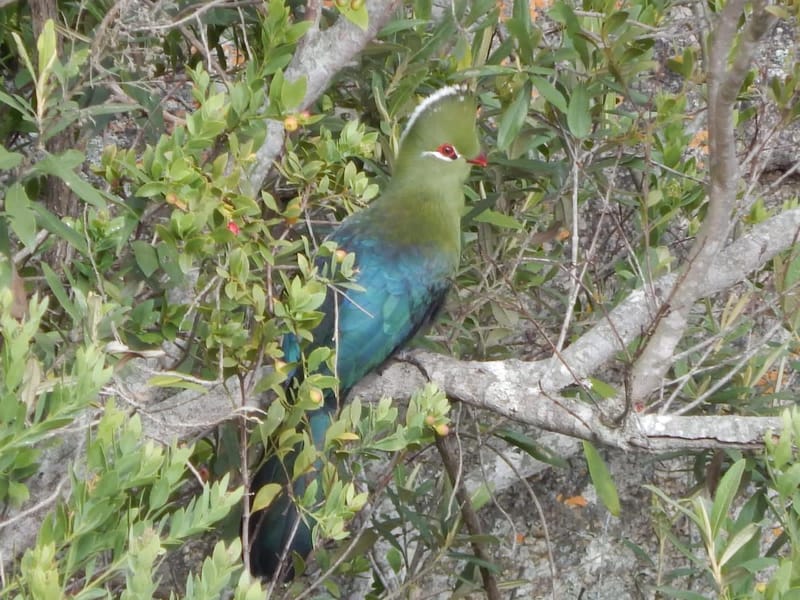
Birds
Our farm is not only home to an array of South African game but also a diverse range of bird species. With over 200 species of birds, you'll have the chance to spot some of the most spectacular avian species up close and personal. Whether you're an avid birder or just enjoy the spontaneous sight here and ther, you'll enjoy exploring the variety of habitats, including rivers, grasslands, and woodlands, that are home to an abundance of birdlife. The mountain fynbos is home to many endemic bird species such as the Cape Sugarbird and Orange-Breasted Sunbird. Some of the most sought-after bird sightings on the farm include the African Fish Eagle, Southern Boubou and the Knysna Turaco, just to name a few.
Flora

Mountain Fynbos
Mountain fynbos is a unique vegetation biome that is endemic to the Cape Floristic Region of South Africa. It is characterised by a diverse range of plants that have adapted to the harsh mountainous environment, including low nutrient soils, high winds, and extreme temperatures. It may seem uninteresting at first, but on closer inspection fynbos reveals itself to be a mesmerising mosaic of plants bursting with diversity. Grasses, shrubs, succulents with tough leaves that conserve water and produce bright blooming flowers in certain months. From proteas, ericas, to restios! These plants not only provide stunning visual displays but also play important roles in the ecosystem, such as providing food and shelter for a variety of animal species.


